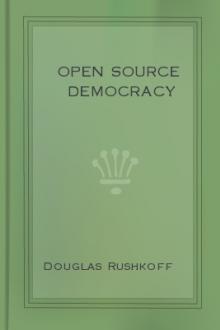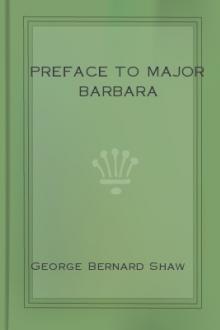The Fifteen Decisive Battles of the World from Marathon to Waterloo, Edward Creasy [simple e reader TXT] 📗

- Author: Edward Creasy
- Performer: -
Book online «The Fifteen Decisive Battles of the World from Marathon to Waterloo, Edward Creasy [simple e reader TXT] 📗». Author Edward Creasy
“When Duke William himself landed, as he stepped on the shore, he slipped and fell forward upon his two hands. Forthwith all raised a loud cry of distress. ‘An evil sign,’ said they, ‘is here.’ But he cried out lustily, ‘See, my lords! by the splendour of God, [William’s customary oath.] I have taken possession of England with both my hands. It is now mine; and what is mine is yours.’
“The next day they marched along the sea-shore to Hastings. Near that place the Duke fortified a camp, and set up the two other wooden castles. The foragers, and those who looked out for booty, seized all the clothing and provisions they could find, lest what had been brought by the ships should fail them. And the English were to be seen fleeing before them, driving off their cattle, and quitting their houses. Many took shelter in burying-places, and even there they were in grievous alarm.”
Besides the marauders from the Norman camp, strong bodies of cavalry were detached by William into the country, and these, when Harold and his army made their rapid march from London southward, fell, back in good order upon the main body of the Normans, and reported that the Saxon king was rushing on like a madman. But Harold, when he found that his hopes of surprising his adversary were vain changed his tactics, and halted about seven miles from the Norman lines. He sent some spies, who spoke the French language, to examine the number and preparations of the enemy, who, on their return, related with astonishment that there were more priests in William’s camp than there were fighting men in the English army. They had mistaken for priests all the Norman soldiers who had short hair and shaven chins; for the English layman were then accustomed to wear long hair and mustachios, Harold, who knew the Norman usages, smiled at their words and said, “Those whom you have seen in such numbers are not priests, but stout soldiers, as they will soon make us feel.”
Harold’s army was far inferior in number to that of the Normans, and some of his captains advised him to retreat upon London, and lay waste the country, so as to starve down the strength, of the invaders. The policy thus recommended was unquestionably the wisest; for the Saxon fleet had now reassembled, and intercepted all William’s communications with Normandy; so that as soon as his stores of provisions were exhausted he must have moved forward upon London; where Harold, at the head of the full military strength of the kingdom, could have defied his assault, and probably might have witnessed his rival’s destruction by famine and disease, without having to strike a single blow. But Harold’s bold blood was up, and his kindly heart could not endure to inflict on his South Saxon subjects even the temporary misery of wasting the country. “He would not burn houses and villages, neither would he take away the substance of his people.”
Harold’s brothers, Gurth and Leofwine, were with him in the camp, and Gurth endeavoured to persuade him to absent himself from the battle. The incident shows how well devised had been William’s scheme of binding Harold by the oath on the holy relics. “My brother”, said the young Saxon prince, “thou canst not deny that either by force or free-will thou hast made Duke William an oath on the bodies of saints. Why then risk thyself in the battle with a perjury upon thee? To us, who have sworn nothing, this is a holy and a just war, for we are fighting for our country.
Leave us then, alone to fight this battle, and he who has the right will win.” Harold replied that he would not look on while others risked their lives for him. Men would hold him a coward, and blame him for sending his best friends where he dared not go himself. He resolved, therefore, to fight, and to fight in person: but he was still too good a general to be the assailant in the action. He strengthened his position on the hill where he had halted, by a palisade of stakes interlaced with osier hurdles, and there, he said, he would defend himself against whoever should seek him.
The ruins of Battle Abbey at this hour attest the place where Harold’s army was posted. The high altar of the abbey stood on the very spot where Harold’s own standard was planted during the fight, and where the carnage was the thickest. Immediately after his victory William vowed to build an abbey on the site; and a fair and stately pile soon rose there, where for many ages the monks prayed, and said masses for the souls of those who were slain in the battle, whence the abbey took its name. Before that time the place was called Senlac. Little of the ancient edifice now remains: but it is easy to trace among its relics and in the neighbourhood the scenes of the chief incidents in the action; and it is impossible to deny the generalship shown by Harold in stationing his men; especially when we bear in mind that he was deficient in cavalry, the arm in which his adversary’s main strength consisted.
A neck of hills trends inwards for nearly seven miles from the high ground immediately to the north-east of Hastings. The line of this neck of hills is from south-east to north-west, and the usual route from Hastings to London must, in ancient as in modern times, have been along its summits. At the distance from Hastings which has been mentioned, the continuous chain of hills ceases. A valley must be crossed, and on the other side of it, opposite to the last of the neck of hills, rises a high ground of some extent, facing to the south-east. This high ground, then termed Senlac, was occupied by Harold’s army. It could not be attacked in front without considerable disadvantage to the assailants, and could hardly be turned without those engaged in the manoeuvre exposing themselves to a fatal charge in flank, while they wound round the base of the height, and underneath the ridges which project from it on either side. There was a rough and thickly-wooded district in the rear, which seemed to offer Harold great facilities for rallying his men, and checking the progress of the enemy, if they should succeed in forcing him back from his post. And it seemed scarcely possible that the Normans, if they met with any repulse, could save themselves from utter destruction. With such hopes and expectations (which cannot be termed unreasonable, though “Successum Dea dira negavit,”) King Harold bade his standard be set up a little way down the slope of Senlac-hill, at the point where the ascent from the valley was least steep, and on which the fiercest attacks of the advancing enemy were sure to be directed.
The foundation-stones of the high altar of Battle Abbey have, during late years, been discovered; and we may place our feet on the very spot where Harold stood with England’s banner waving over him; where, when the battle was joined, he defended himself to the utmost; where the fatal arrow came down on him; where he “leaned in agony on his shield;” and where at last he was beaten to the earth, and with him the Saxon banner was beaten down, like him never to rise again. The ruins of the altar are a little to the west of the high road, which leads from Hastings along the neck of hills already described, across the valley, and through the modern town of Battle, towards London. Before a railway was made along this valley, some of the old local features were more easy than now to recognise. The eye then at once saw that the ascent from the valley was least steep at the point which Harold selected for his own post in the engagement. But this is still sufficiently discernible; and we can fix the spot, a little lower down the slope, immediately in front of the high altar, where the brave Kentish men stood, “whose right it was to strike first when ever the king went to battle,” and who, therefore, were placed where the Normans would be most likely to make their first charge. Round Harold himself, and where the plantations wave which now surround the high altar’s ruins, stood the men of London, “whose privilege it was to guard the king’s body, to place themselves around it, and to guard his standard.” On the right and left were ranged the other warriors of central and southern England, whose shires the old Norman chronicler distorts in his French nomenclature. Looking thence in the direction of Hastings, we can distinguish the “ridge of the rising ground over which the Normans appeared advancing.” It is the nearest of the neck of hills. It is along that hill that Harold and his brothers saw approach in succession the three divisions of the Norman army. The Normans came down that slope, and then formed in the valley, so as to assault the whole front of the English position. Duke William’s own division, with “the best men and greatest strength of the army, made the Norman centre, and charged the English immediately in front of Harold’s banner, as the nature of the ground had led the Saxon king to anticipate.
There are few battles the localities of which can be more completely traced; and the whole scene is fraught with associations of deep interest: but the spot which, most of all, awakens our sympathy and excites our feelings, is that where Harold himself fought and fell. The crumbling fragments of the grey altar-stones, with the wild flowers that cling





Comments (0)